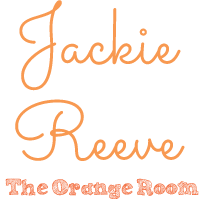In October I started working with 2nd and 3rd grade on how to use the library. Each grade focused on something different, but they both did really well with it.
After our back-to-school housekeeping activities in September, I walked the 2nd graders through the sections of the library. They choose books from the shelves in 1st grade, but it’s in 2nd grade that we really started talking about what the different sections mean. We talked about fiction vs. nonfiction in 1st grade, but they needed a refresher on that. We have 4 sections in our library where students can check out books: Fiction, Nonfiction, Easy Reading, and Biography. We defined all the sections and spent A LOT of time practicing which books belong where. I explained that the spine labels have the book’s address, and I gave them some basics on how to use that information to find where the book lives. I explained the alphabetical order of the books in general terms: in 3rd grade I really go into how to find books in the nonfiction section. I don’t go over the specifics of Dewey Decimal until 3rd grade, but I do talk to the 2nd graders about the nonfiction books having numbers, and the other 3 sections having “F”, “B”, or “E”.
I talk to the 2nd graders about how they select their books, too. I do an activity called “Judge a Book By Its Cover” where I read them a bunch of titles and they tell me if they want that book. Then I show them the cover and see how their answers change. I also show them some covers and then read the summary of the book. We compare their different answers. I explained what kind of information they can find inside the book jacket and on the back of the book.
Then I made up a shelf matching worksheet and divided them into teams. The questions are things like, “I want a Star Wars chapter book.” They have to write down which of the 4 sections it belongs in. I made up a game last year that the 2nd graders love called “Drop Everything and Read!” It’s like Musical Chairs with bookshelves. They wander around the library with a shelf marker until I yell “Drop everything and read!” They have to grab the first book they see, whether they would normally be drawn to it or not, and sit down to read it in front of the shelf where they found it. After a few minutes we start a new round, and if they don’t like the book they pulled they return it to the shelf (where their shelf marker should be holding its place). Students who don’t grab the first book, don’t use their shelf marker, run, or talk (I try to have them play silently to help them really focus on the books in front of them rather than what their friends grab) are out for 2 rounds. We keep playing until the kids have found 2 books they want to check out from the library.
Then we ended the unit with another game to show me how well they’d learned everything since the beginning of October. I just call it “The Shelving Game.” I divided them into teams of 4 and put out a pile of books. Teams must take the next book at the top of the pile, look at the spine label, and go stand by the exact shelf where they think the book belongs. Not just the section, but the actual shelf.They did really well with this game. A few teams were tripped up by the numbers at first, but after lots of hints to look closely at the books on the nonfiction shelves they figured out the pattern. It worked out perfectly.
